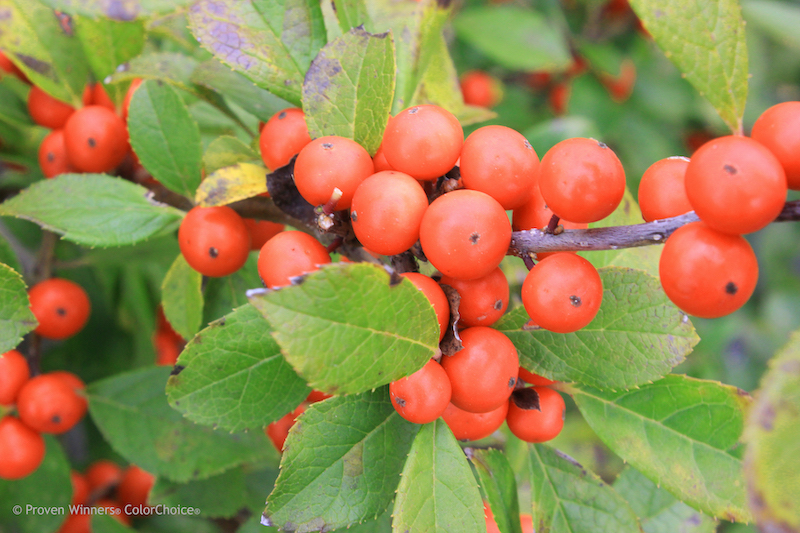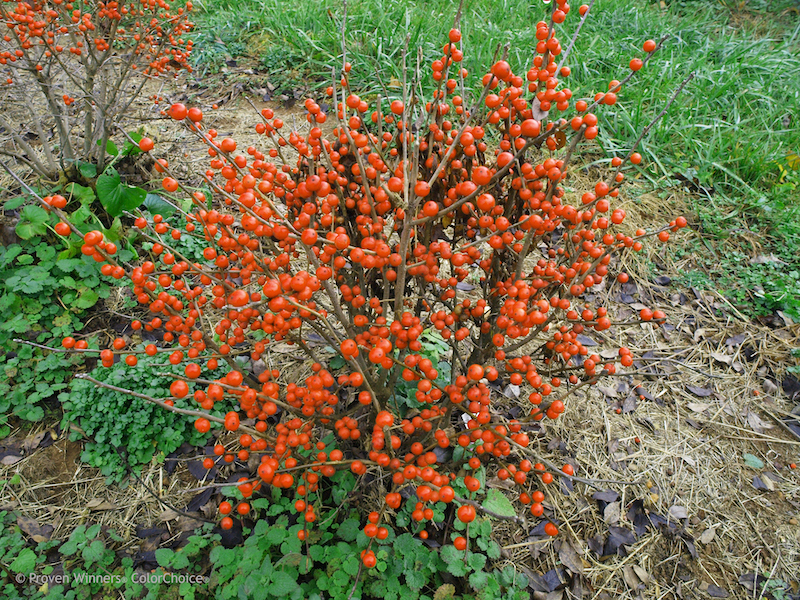Growing Winterberry Holly
Winterberry Holly is all about color. Dark green leaves are elliptical and have serrated edges. Female plants produce greenish-white flowers that give way to bright red berries. This is a deciduous shrub, and while the foliage falls away in the fall, the berries stay in place throughout the winter. The bold red berries provide color and serve as a food source for birds. Winterberry Holly can reach 3 to 15 feet tall and wide, depending on the cultivar, and is native to the Eastern U.S.

Planting Winterberry Holly
Winterberry Holly plants need 6 to 8 hours of sunlight, so plant them in full to partial sun. These plants need plenty of light to set flowers and berries. Expect the best results when grown in acidic soil that has a high organic content. Winterberry Holly will fail to thrive in neutral to alkaline soil. Advanced gardeners may want to test the soil pH and amend the soil as needed to address the pH requirements.
Watering Winterberry Holly
Winterberry Holly shrubs naturally grow in wetlands and prefer moist conditions. Plant this shrub in areas that are naturally damp or have poor drainage. Water Winterberry Holly about one inch of water per week. Plants in dry soil and intense sunlight may need water more often.

Fertilizing Winterberry Holly
Fertilizing plants provides nutrients and supports new growth. Winterberry Holly shrubs thrive in rich soil with high organic content. Feed Winterberry Holly using a fertilizer formulated for acid-loving plants. Apply a layer of rich mulch around the base of the plant in the spring.
Pruning Winterberry Holly
Winterberry Holly shrubs can become unwieldy, so trim old branches each spring. Up to one-third of the branches can be pruned at a time. Winterberry Holly sets flowers on new growth and should be pruned in early spring before new growth appears. Trimming new growth will reduce flowers and berries during the winter.
Caring For Winterberry Holly in Pots
Winterberry Holly offers year-round interest between the foliage in the warmer months and berries in the winter. Grow Winterberry Holly in containers to enjoy the greenery and berries on a deck or to frame a door or entryway. This plant is a perennial in zones 3 through 9 and can be grown in a container outdoors year-round in the warmer reaches of its hardiness range. In cold regions, potted Winterberry Holly will need to be moved indoors for protection.

Winter Care for Winterberry Holly
Most deciduous shrubs do not have much visual interest to offer in the winter, but the Winterberry Holly is an exception thanks to its bright red berries. The leaves will fall away and the berries will be on full display throughout the colder months. Place a layer of mulch around the base of the plant in the fall, but otherwise, this plant does not need any additional care during the winter.
 |
Author Alison Cotsonas - Published 2-28-2023 |
